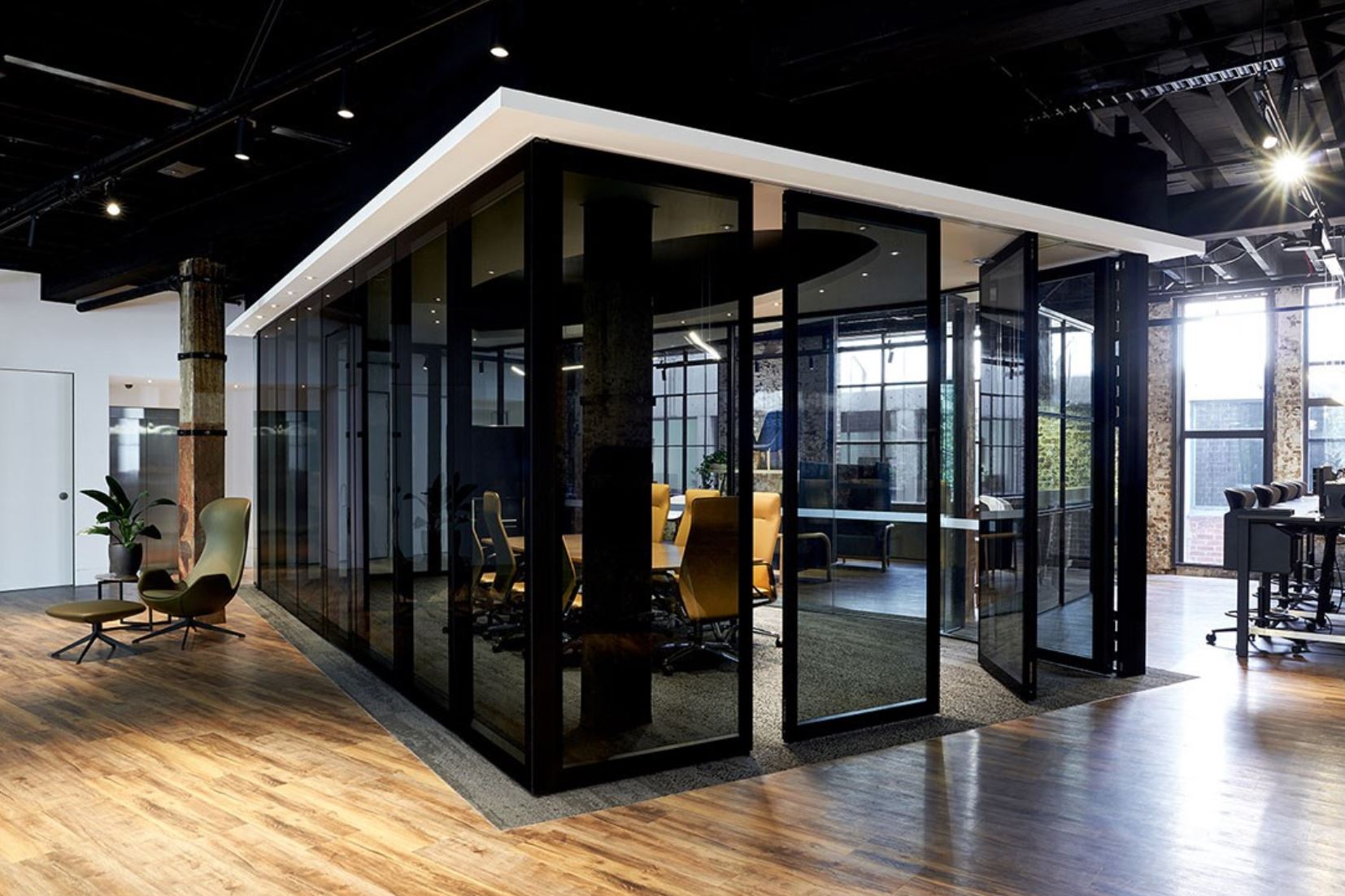Preparing offices for the age of distributed work
Evaluating the impact of flexible designs in coping with the uncertain future demand for office space.
Authors
Claudio Martani1, Noemi Fiorot1, Andrea González2, Bryan T. Adey1, Joris Van Wezemael2
1 Infrastructure Management Group (IMG), Institute of Construction and Infrastructure Management (IBI), ETH Zürich, Stefano-Franscini-Platz 5, 8093 Zürich, Switzerland
2 Spatial Transformation Laboratory (STL), Institute for Spatial and Landscape Development (IRL), ETH Zürich, Stefano-Franscini-Platz 5, 8093 Zürich, Switzerland
The potential growth in the home-office working mode poses a large uncertainty on the future demand for office space. Flexible offices can help limit the negative effect of this uncertainty by allowing future changes of use, though they often cost more than traditional offices. To ensure that the investment in flexibility is proportioned to the risk it minimises, the real options method is used in this text for modelling the uncertainty of future demand for office space and estimating its effect on stakeholders in the long-term. The method is tested on a mixed-tenant office building in Zurich.
The demand for office space is subject to a large uncertainty in the medium to long term, due to the growing momentum of home-office working mode. The COVID-19 crisis has proved that an extended use of the home-office working mode is possible, thanks to videoconferencing technology. Further, it is potentially even advantageous, reducing workers’ commuting time. However, it is yet unclear wo what extent this will become a trend after the pandemic. It is certain that in case of a large transition to a home-office working mode, the current fixed configuration of most offices does not guarantee an adequate use of space. In the future, co-working spaces might be better suited to cope with a more dispersed way of working. Conversely, these solutions are not adequate at present to accommodate the existing demand for traditional offices.
Flexible office configurations could help overcome the limitations of rigid designs (i.e. either fixed traditional offices or fixed co-working spaces) by postponing the final decision on usage until more information on needs becomes available. An example of a flexibly designed space might include offices predisposed to be easily converted into co-working spaces or even into other uses (e.g. residential units), depending on the future evolution of the demand for space. Such flexibility (i.e. the embedded options to convert the use of spaces) can facilitate building owners, tenants and users, as well as the wider society in maximising their benefits while the needs to be accommodated evolve. However, it must be considered that constructing flexible office space often requires substantial investment, meaning that embedding options to be triggered in the future can be expensive.
To ensure that these investments are made wisely, i.e. that the net benefit of all involved stakeholders are maximised, the use of the real options method is explored in this work. This allows modelling the uncertainty of future demand for office space and simulating scenarios to estimate the effect of alternative designs in the long-term. The method is tested on a mixed-tenants office building in Zurich for which ten designs are proposed and the triggering logic modelled. The designs have various degrees of flexibility and the triggering logic mimics the decisional criteria of a real owner. The results show that - under the investigated circumstances - a flexible design with movable walls to enable a periodic conversion of the unrented offices into co-working spaces, and with parceled technical elements to allow the conversion of long-time unrented offices into residential units, is the optimal decision for all involved stakeholders over the course of the building’s life. Conclusions on the strengths and limitations of using the real options method in this context are then drawn and an outlook of the envisioned future developments offered.
Selected Literature
Ashuri, B., Kashani, H. and Lu, J. (2011) ‘An investment analysis framework for energy retrofit in existing buildings’, in 47th ASC Annual International Conference.
De Neufville, R., Lee, Y. S. and Scholtes, S. (2008) ‘Using flexibility to improve value-for-money in hospital infrastructure investments’, in Infrastructure Systems and Services: Building Networks for a Brighter Future (INFRA), 2008 First International Conference on, pp. 1–6.
De Neufville, R. and Scholtes, S. (2011) Flexibility in engineering design. MIT Press.
De Neufville, R., Scholtes, S. and Wang, T. (2006) ‘Real options by spreadsheet: parking garage case example’, Journal of infrastructure systems. American Society of Civil Engineers, 12(2), pp. 107–111.
Ellingham, I. and Fawcett, W. (2007) New generation whole-life costing: Property and construction decision-making under uncertainty. Routledge.
Fawcett, W. and Chadwick, A. (2007) ‘Space-time management and office floorspace demand: Applied experience and mathematical simulations’, Journal of Corporate Real Estate. Emerald Group Publishing Limited, 9(1), pp. 5–24.
Fawcett, W. and Rigby, D. (2009) ‘The interaction of activity, space and cost variables in office workstation sharing’, Journal of Corporate Real Estate. Emerald Group Publishing Limited, 11(1), pp. 38–51.
Guma A. and de Neufville, R. (2008) Real option analysis of a vertically expandable real estate development. MIT.
Martani, C. et al. (2015) ‘A New Model for Evaluating the Future Options of Integrating Ground Source Heat Pumps in Building Construction’, in. UCL STEaPP.
Martani, C. et al. (2016) ‘Design with Uncertainty: The Role of Future Options for Infrastructure Integration’, Computer-Aided Civil and Infrastructure Engineering, p. n/a--n/a. doi: 10.1111/mice.12214.
Martani, C., Cattarinussi, L. and Adey, B. T. (2018) ‘A new process for the evaluation of the net-benefit of flexible ground-floor ceiling in the face of use transition uncertainty’, Journal of Building Engineering. Elsevier, 15, pp. 156–170.
Menassa, C. C. (2011) ‘Evaluating sustainable retrofits in existing buildings under uncertainty’, Energy and Buildings. Elsevier, 43(12), pp. 3576–3583.
Ratti, C., Claudel, M. (2016), The city of tomorrow. Yale university press. Yale, USA


